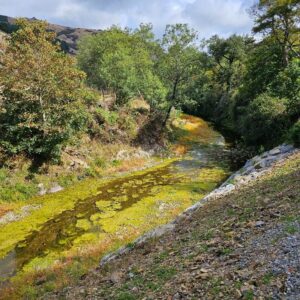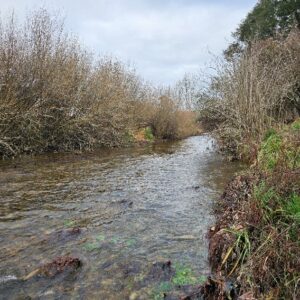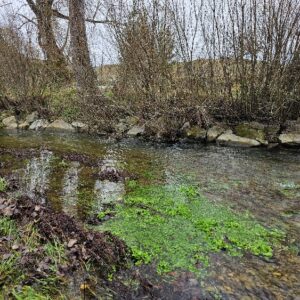Residents looking after our upper sub-catchments

The Tasman Bay Guardians crew are training local residents to monitor the health of the Motueka catchment including waterways in the upper catchment. They held a SHMAK training day on Friday 21st June at the Dove River. Debbie Win, Chair of the Motueka Catchment Collective’s Steering Group, and a Dove catchment resident, came along to the training and said:
“5 years ago, SHMAK training was the catalyst for me to call others in the Dove Catchment, to see if they would be interested in forming a group. We have grown quietly ever since. There has always been a lot in interest out there in learning about stream health, this is slowly growing stronger with residents now wanting to form a water knowledge group”.
Dovedale residents are planning to set up their own sub-catchment monitoring group. It is hoped that the group will start regularly monitoring the Dove and other nearby streams to get an undertanding of their health, and whether actions can be taken by the community to improve water quality and river habitat.
Richard lives right at the top of the catchment (Upper Motupiko) and Sophie lives in the Stanley Brook sub-catchment so they may focus on waterways closer to them.
Sophie added:
“I’m looking forward to monitoring the creek on my land to see how it changes, and hopefully improves as we do more planting and clearing of weeds along it.”
Kate Radloff, TBG freshwater monitoring trainer comments:
“Community-based freshwater monitoring has an important role when figuring out which streams and rivers need attention. SHMAK training workshops like this are great because they help communities learn more about their local water systems. Once people feel confident collecting good data, they can start planning how to take care of their freshwater resources. It’s all about giving communities the tools and confidence they need to look after their own environment.”
Winifred, who lives near the Win Valley Stream, next to the Dove River, very much enjoyed her day learning how to use the SHMAK kit. She’s interested in freshwater monitoring because:
“I want to know more about many aspects of the stream that flows through our property; what critters are in it, what nutrients may be present, are we personally doing anything that has adverse or favourable consequences for the health of the stream, how does the stream fare as it moves towards the Dove River, and on to the Motueka River? So much knowledge to be gained through monitoring. ”
The Dove River arises in hills between the Wai-iti River and Motueka River and flows north-west into the Motueka near Woodstock. Where the group were doing their training, the condition of the river is highly modified, with little riparian vegetation apart from willows. There are weeds growing in the water, and human modifications to the bank. Kate has the following to say about the Dove River:
“The Dove River’s a priority within the catchment because it hasn’t been in great shape for a while. Fortunately, the Dovedale community cares deeply so by assessing its current and future state, they will be able to make informed decisions to drive any possible improvements. Some changes may not be easily achievable individually, but as a close-knit group, their collective voice and actions can become stronger and more impactful when needed.”
Further down the river, the photo below shows some algal blooms that were present in the river over the summer. The cause for this is not known, but it could be from excess nutrients, lack of shade and higher temperatures.
TBG will continue running SHMAK training for local community members. MCC and TBG are excited about the increasing interest being shown by the community.
“It seems there is a groundswell in the community wanting to learn about and care for their local awa which is fantastic to see.”




